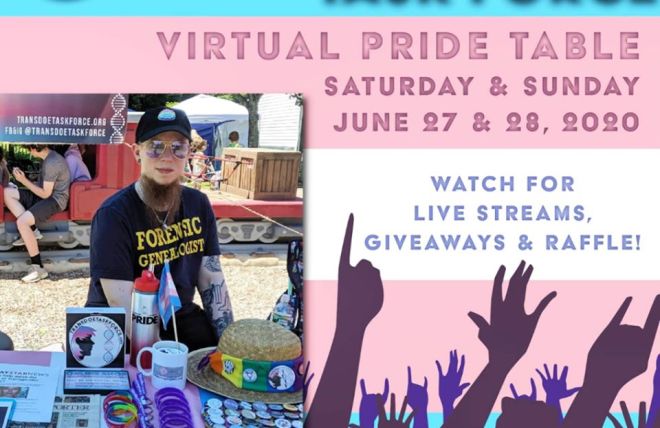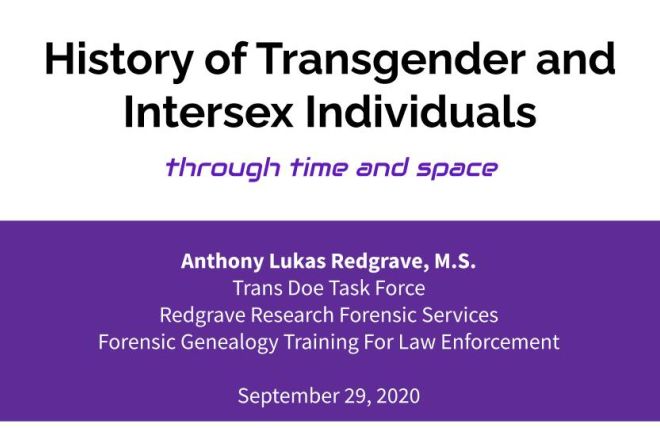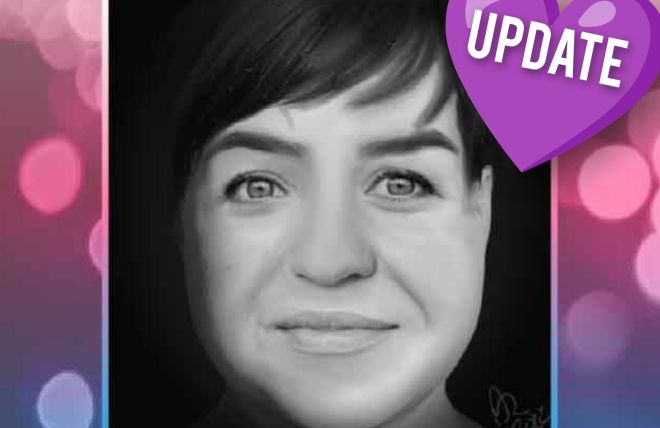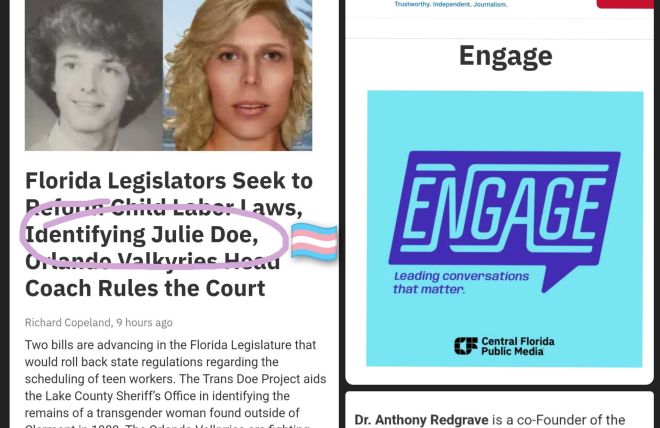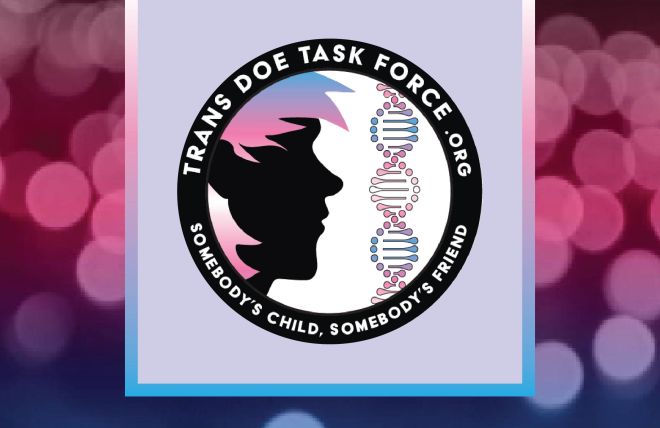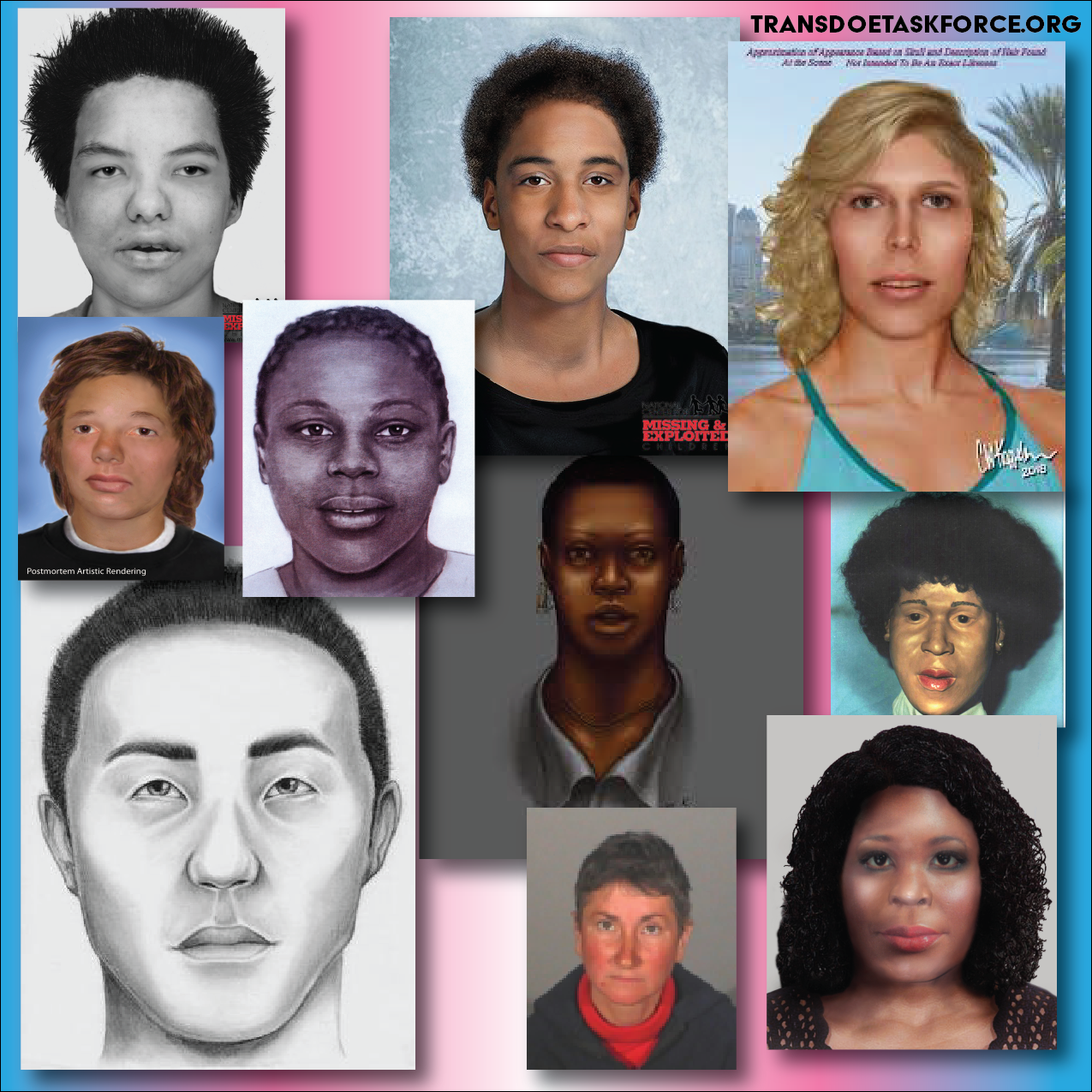
Guest post by Viktor, TDTF volunteer, admin of Trans Cold Cases
& Forensic Genealogy intern at Redgrave Research/FG4LE
Welcome, citizen sleuth allies! Thank you so much for your interest and willingness to help. It is very much appreciated and welcomed. I truly believe that collaboration between people of diverse backgrounds, and a sincere desire to help will be the key to helping solve so many of our cases. I’ve compiled some thoughts on how to effectively and responsibly look for potential matches that I hope will be helpful to those of you who have decided to help.
Searching for unidentified people and potential matches is mentally and emotionally difficult work. This becomes much harder when the unidentified person is Trans gender or gender variant, and especially for older cases. Many Trans people are estranged from their biological families, and even if they are not, those families may not report them as being missing. If they do report them as missing, many times, it will be as the gender they were assigned at birth, not the gender they present as, and also may be under their deadname. Many police departments require a family member to report a person as missing, and that may not be possible for Trans or gender variant people who are not in contact with their biological family. Chosen families are extremely normal for LGBTQIA+ people, and it’s very possible that the chosen family will not be allowed to file a police report. And unfortunately, sometimes the attitudes of the officers tasked with taking missing persons reports can also actively hamper efforts to report a Trans or gender variant person as a missing person.
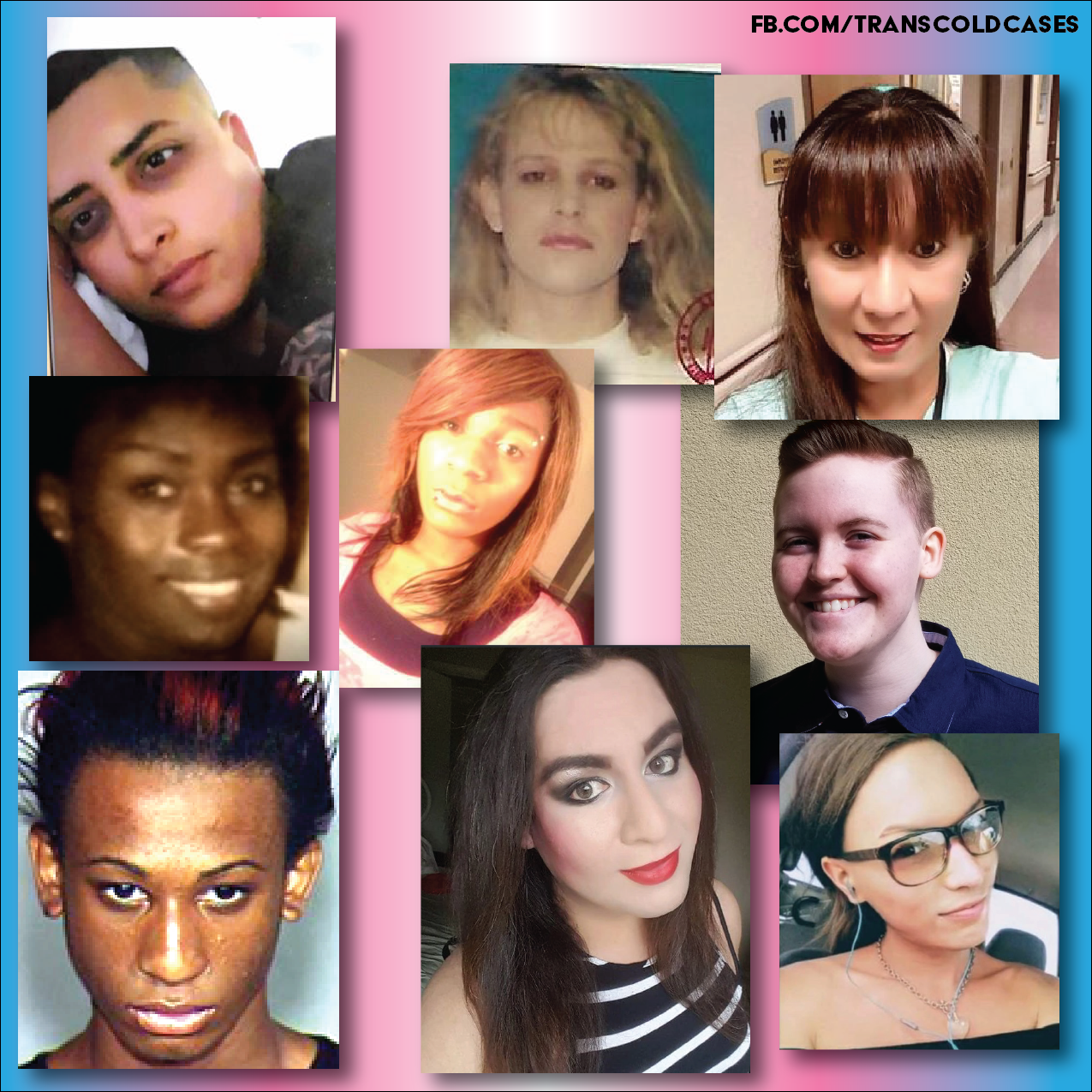
Because of these factors, there are several traditional ways of looking for potential matches which may not be particularly effective. When we search for unidentified people, we are usually checking through newspaper archives, unidentified persons databases, and old internet posts. You may have to look for offensive terms for Trans people while searching. We look for mentions of clothes or accessories being found with the remains that don’t appear to match the listed gender. We look at whether or not the authorities were even able to determine what gender the person was. If possible, we check if DNA is available, because that can indicate a different gender than the one the remains present as. We look for nasal surgery, breast implants, and mentions of pitting on the pelvis. This last indicator used to be considered a sign of a woman having had children, but that has been proven not to be true, and may indicate that the unidentified person is Trans and were taking hormones, or were gender variant. (Note: more research is needed in this area, because there are even cisgender males who have this pitting.)
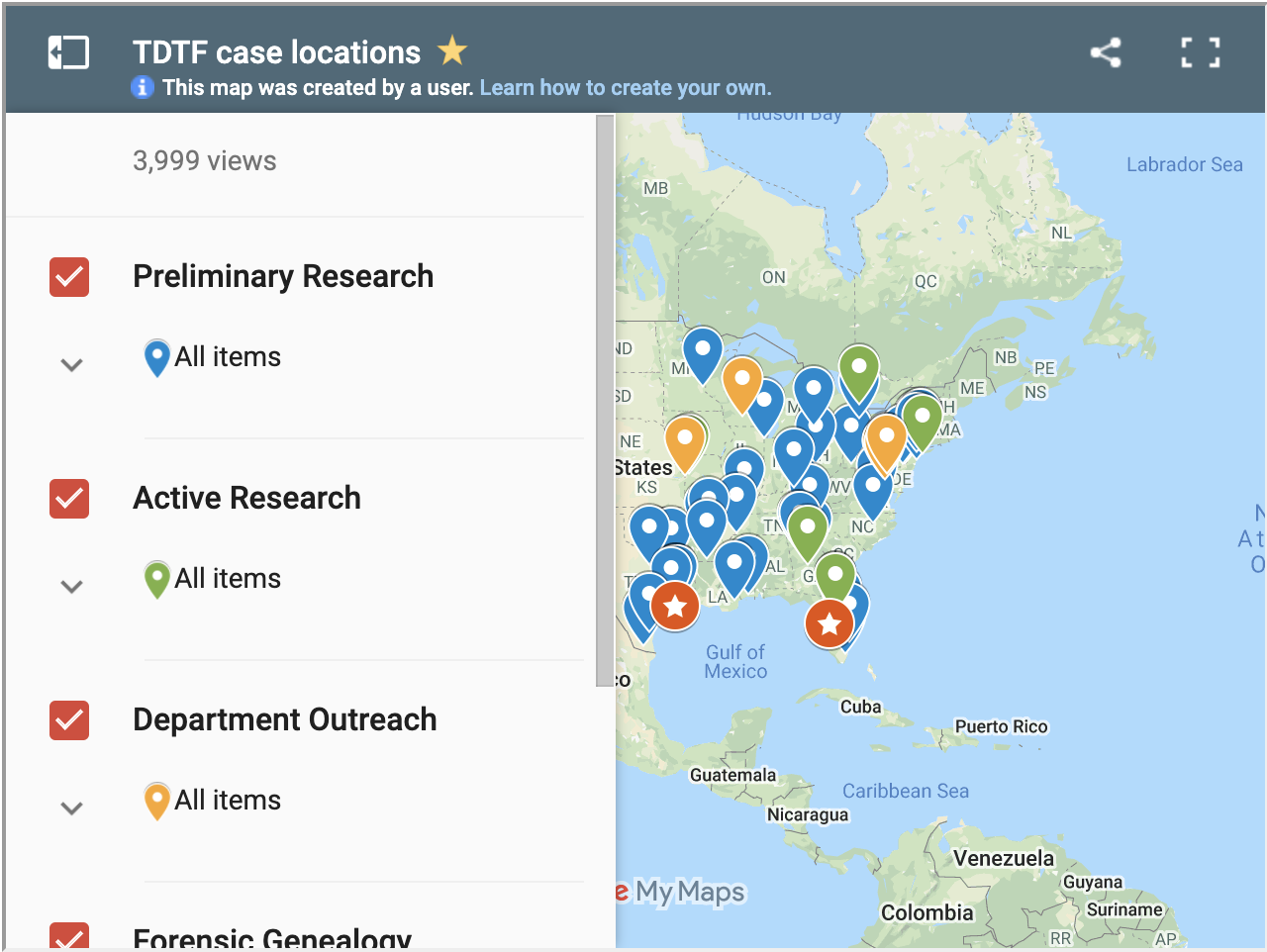
If you find a record of unidentified remains that match these criteria, you can enter that information on the Trans Doe Task Force case submission form to be added to the case map. Every pin on this map represents a case we are actively researching, or which is currently being worked on by Forensic Genealogists. The red pins are cases which are currently being worked on. The green pins are cases we are preparing for outreach to the agencies. The blue pins are cases we are actively researching to determine whether or not they are cases where the person is Trans or gender variant. If you click on a pin, you will get basic information on the case, a forensic reconstruction if one exists, and a link to our source (when possible.)
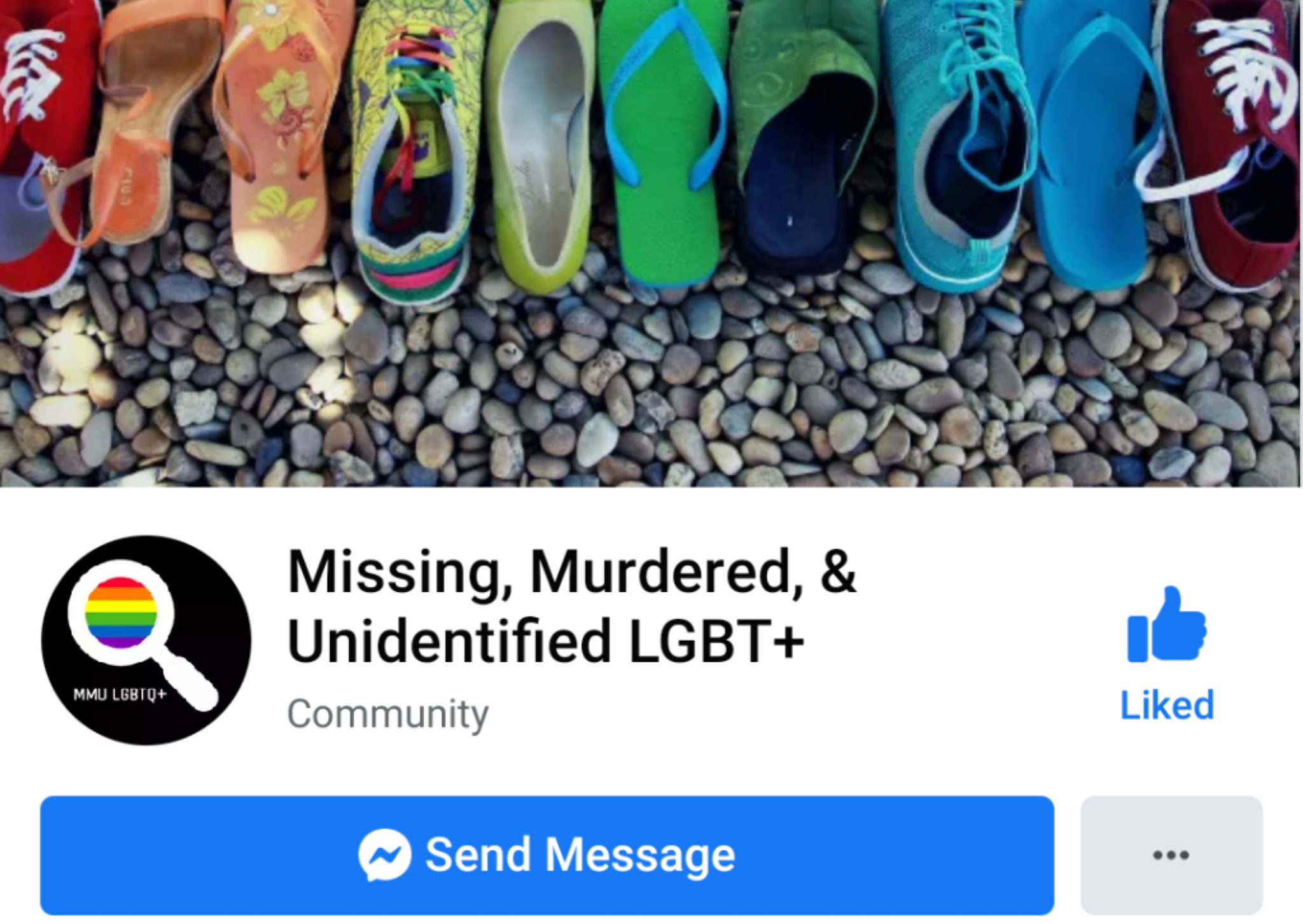
We also work closely with missing persons groups to search for cases of missing people that may be one of our cases. The Trans Cold Cases group, run by TDTF volunteer Viktor and the Missing, Murdered, & Unidentified LGBT+ group, run by TDTF volunteer Megan, work closely together and share information between all three groups. We appreciate and welcome tips on cases as well, and are able to help boosting and assist missing persons cases quickly because of the help of everyone who cares, and sends us messages when someone who is part of our community goes missing.
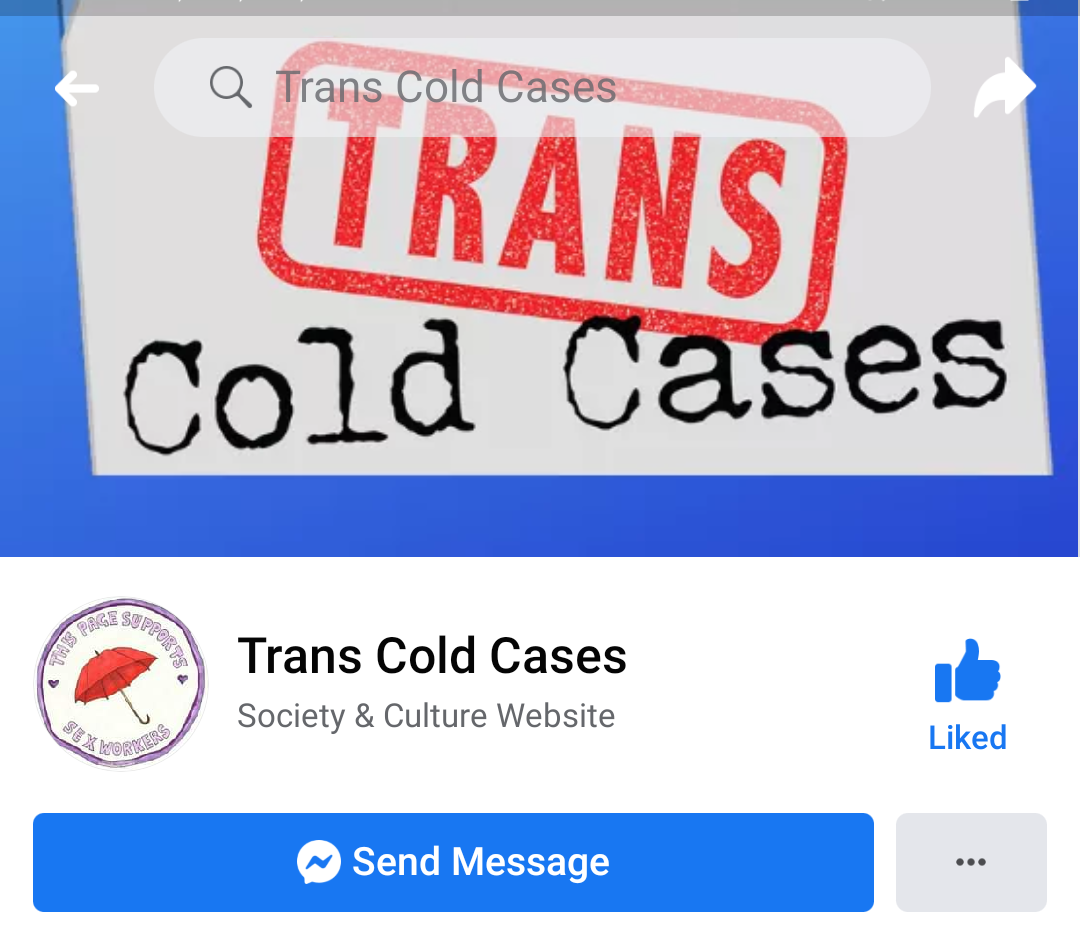
Always check the local area of where a person went missing from FIRST. Just because someone was reported missing in close proximity to where an unidentified person was located, it does not mean those remains have been automatically checked against your missing person. ESPECIALLY with skeletal remains, do not rule out someone based on the stated gender. If they have demographics listed, see how closely those match. If they have a forensic reconstruction done, see if the underlying skeletal structure of the face appear to match? (So bony structures like eye placement, cheekbones, and head shape. General nose shape is also okay, if you are looking at bridge of the nose, but nostrils and the tip of the nose may look very different on a reconstruction than it does for the living person.) If possible check for unique dentition. Look for descriptions of skeletons that include the term “gracile” if you’re looking for a Trans man, and the term “robust” if you’re looking for a Trans woman.
Check with local LGBTQIA+ groups. If your unidentified person was found along a highway, make sure you check major cities LGBTQIA+ groups in cities that may utilize that highway for mentions of someone being missing. Many LGBTQIA+ people, and especially Black Trans people are understandably very wary of dealing with police, and so will avoid doing so unless they have no other choice. The only mention of these people being missing might be in these groups. They will be referred to by their chosen name, and you should also refer to them by this name. Deadnaming sucks and you shouldn’t do it unless you have to, and then that should only be to assist in an actual identification of a Doe, and never, ever to the family or friends of a missing Trans person.
Don’t contact the families of missing people. I check the language that they use to talk about their Trans or gender variant family member. I personally do not engage with family members who speak disrespectfully of their Trans family members, even though I will still circulate the information about their family member being missing.
I keep an updated list of LGBTQIA+ on my Patreon, which is publicly available, and I am happy to assist you if you have any questions regarding specific unidentified or missing persons cases or if you find a case you think the TDTF should look at.
Thank you so much for your help!
Click here to see the archived video of Viktor’s presentation during TDTF Virtual Pride 2020
